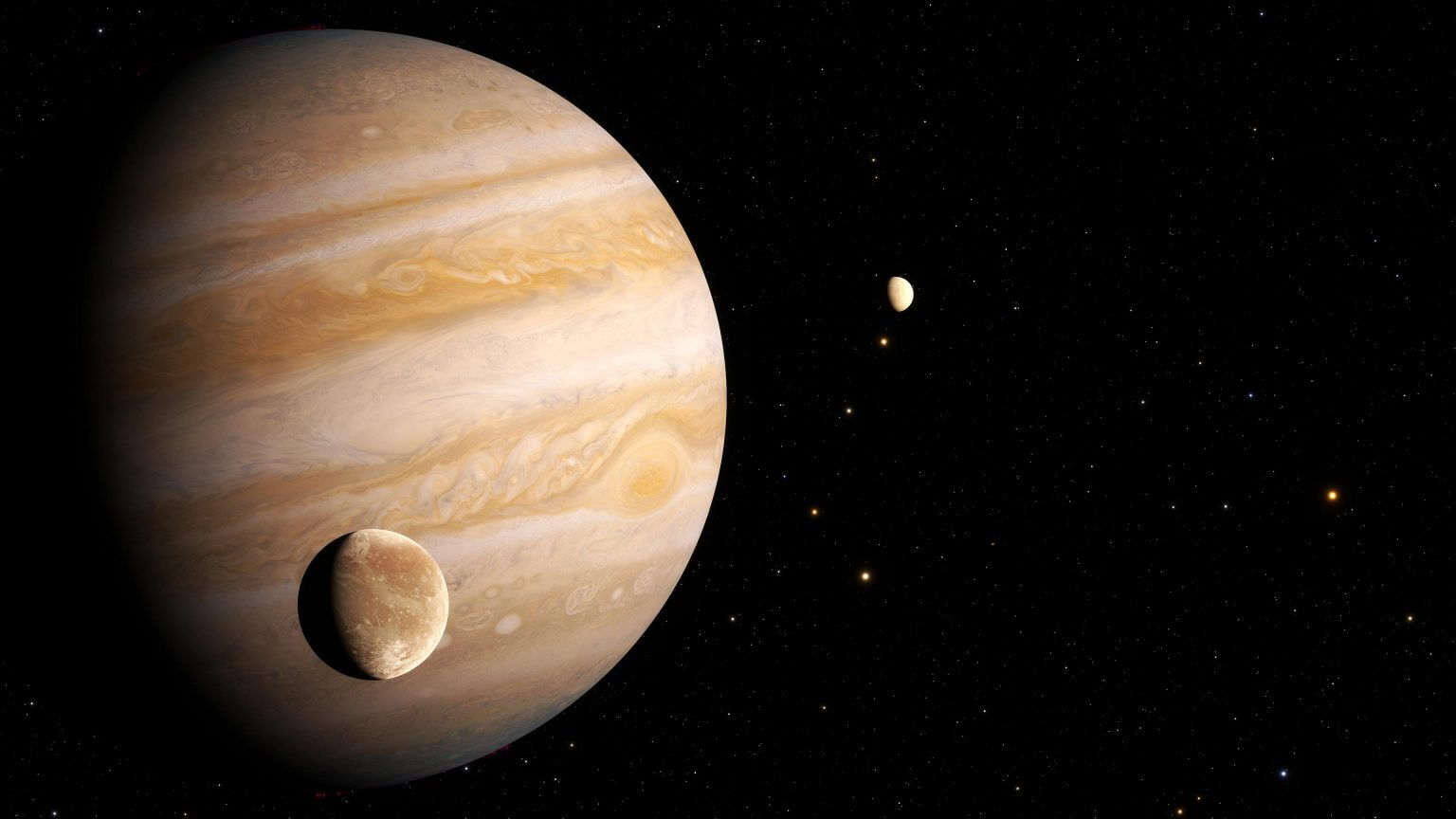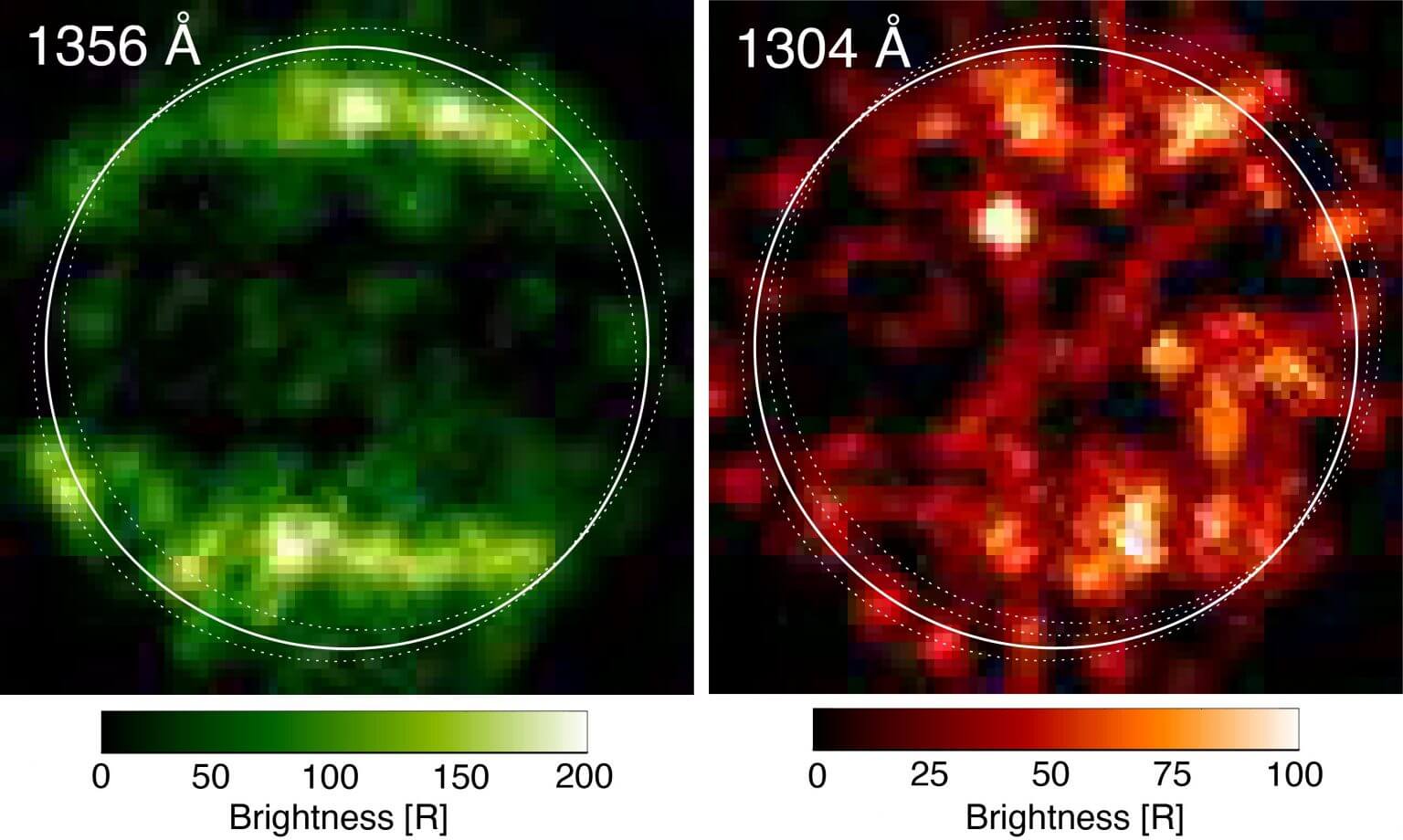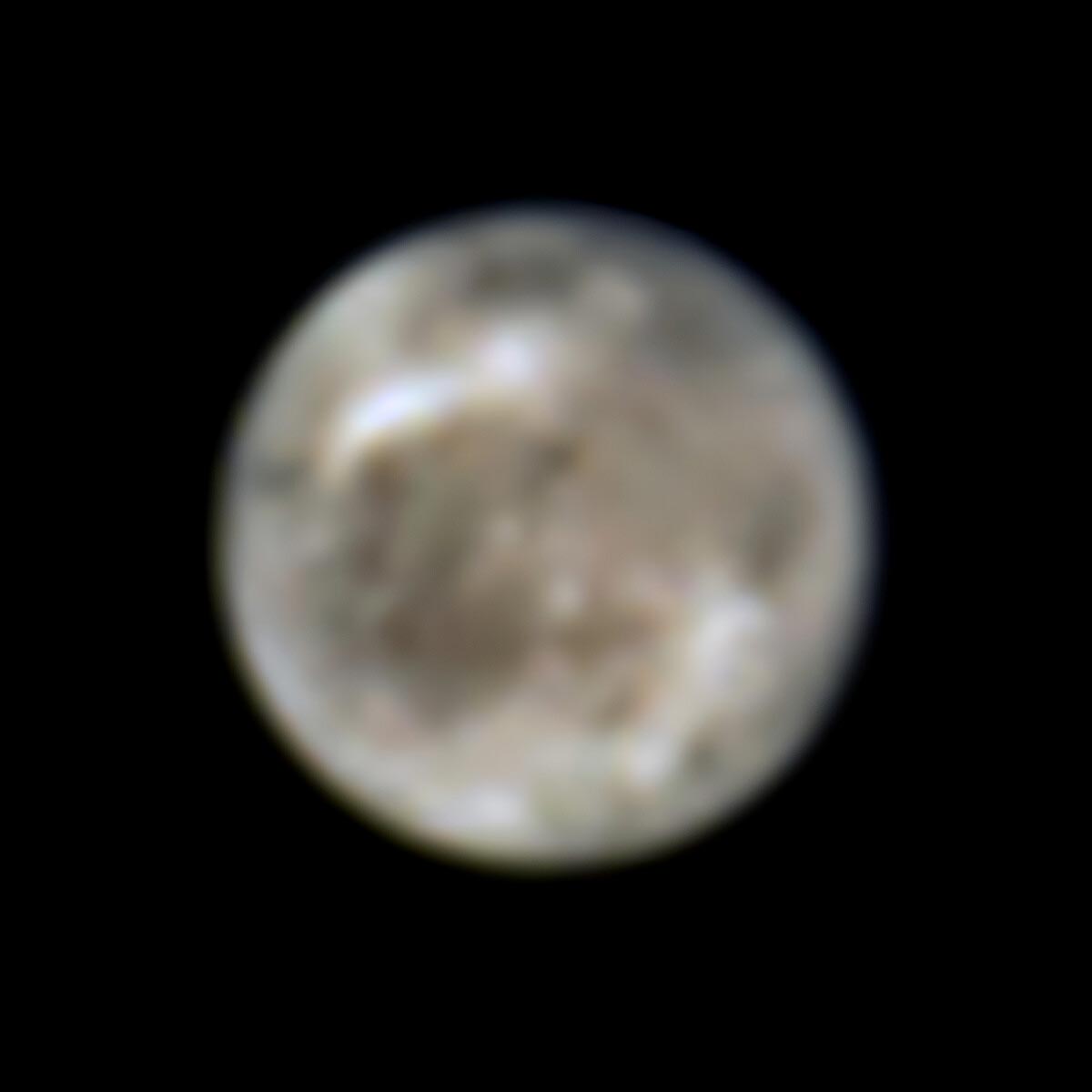הOxygen found in the frozen world is linked to the sublimation of ground ice

Although larger than the fiery planet Mercury, Jupiter's moon Ganymede is not a place to travel to sunbathe. It is 800 million kilometers from the Sun and the water ice on its surface is completely frozen in cold temperatures that go down to minus 150 degrees Celsius. That's why ice is as solid as rock. Yet a shower of charged particles from the sun is enough to turn the ice into water vapor in broad daylight on Ganymede. This is the first time proof of this has been found, courtesy of the Hubble Space Telescope's spectroscopic observations of the Ganymede aurora spanning two decades. Luminescence is used to detect the presence of oxygen, which is then linked to the presence of water molecules splashed from the ground. Ganymede has a deep ocean located at an estimated depth of 160 km below the surface, too deep for water vapor to leak out.
Astronomers used new and archived data from NASA's Hubble Space Telescope to discover proof of water vapor in the atmosphere of Jupiter's moon Ganymede. The vapor is present due to thermal excitation of water molecules from the ice on the moon's surface. Previous studies have produced circumstantial evidence that the moon contains more water than all of Earth's oceans. But the temperatures there are so cold that the water on the ground freezes and the ocean is about 160 km below the crust.
For the first time, astronomers have discovered evidence of water vapor in the atmosphere of Jupiter's moon Ganymede. This water vapor is created when ice from the lunar surface takes off—that is, turns from a solid to a gas.
The scientists used new and archived data from NASA's Hubble Space Telescope to make the discovery, published in the journal Nature Astronomy.
Previous studies have produced circumstantial evidence that Ganymede, the largest moon in the solar system, contains more water than all of Earth's oceans. But the temperatures there are so cold that the water on the ground is frozen. Ganymede's ocean lies approximately 160 km below the crust, so the water vapor is not the evaporation of this ocean.
Astronomers re-examined Hubble observations from the past two decades to find this evidence of water vapor.

In 1998 the Hubble Space Telescope's Imaging Spectrograph took the first UV images of Ganymede, which revealed colorful ribbons of electrified gas called auroral bands, providing further evidence that Ganymede has a weak magnetic field.
The similarity between these UV observations was explained by the presence of molecular oxygen (O2). But some of the observed features did not match emissions expected from a pure O2 atmosphere. At the same time, the scientists concluded that this discrepancy is probably related to higher concentrations of atomic oxygen (O).
As part of a large observing program in support of NASA's Juno mission in 2018, Lorenz Roth of the Royal Institute of Technology KTH in Stockholm, Sweden, led the team set up to measure the amount of atomic oxygen using Hubble. The team's analysis combined data from two instruments: the Hubble Cosmic Source Spectrograph in 2018 and archival images from the Space Telescope Imaging Spectrograph (STIS) from 1998 to 2010.
To their surprise, and contrary to the original interpretations of the 1998 data, they found that there is almost no atomic oxygen in Ganymede's atmosphere. This means there must be another explanation for the apparent differences between these UV images of the aurora.

This image shows Jupiter's moon Ganymede as seen by the Hubble Space Telescope in 1996. Ganymede is 800 million km away, and Hubble can track changes on the moon and detect other features in UV and near-infrared wavelengths. Astronomers have now used new data from the Hubble archive to discover for the first time evidence of water vapor in the atmosphere of Jupiter's moon Ganymede, which is due to the thermal escape of water vapor from the ice on the moon's surface.
Ruth and his team then looked closely at the relative dispersion of the glow in the UV images. The temperature on Ganymede's surface varies greatly during the day, and around noon near the equator it may be warm enough that the ice surface releases (or lifts off) small amounts of water molecules. In fact, the visible differences in the UV images are directly related to where we would expect water to be in the moon's atmosphere.
"Until now, only molecular oxygen has been observed," Roth explained. "It is produced when charged particles erode the surface of the ice. The water vapor we measured now originates from the take-off of ice caused by the thermal escape of water vapor from hot ice areas."
These findings add hope to the upcoming mission of ESA (European Space Agency) JUICE - "exploring the ice on the moons of Jupiter". JUICE is the first major mission in ESA's Cosmic Vision 2015-2025 programme. The launch is planned for 2022 and the arrival at Jupiter in 2029, and at least three years will be devoted to detailed observations of Jupiter and three of its largest moons, with special emphasis on Ganymede as a planetary body and a potential habitable zone.
Ganymede was chosen for detailed investigation because it is a natural laboratory for analyzing the nature, evolution, and potential population of icy worlds in general, the role it plays within the system of Galilean satellites, and its magnetic and plasma interactions with Jupiter and its environment.
"Our results can provide the JUICE instrument teams with valuable information that they can use to fine-tune their observing programs to optimize the use of the spacecraft," added Roth.
Now NASA's Juno mission is taking a closer look at Ganymede and recently released new images of the icy moon. Juno has been studying Jupiter and its environment, also known as the Jupiter system, since 2016.
Understanding the Jupiter system and unraveling its history, from its origin to the possible appearance of habitable environments, will allow us to better understand how gas giant stars and their satellites form and evolve. In addition, it is hoped that new insights will be obtained about the population on Jupiter-like systems outside the solar system.
More of the topic in Hayadan:

One response
Regarding Omri Vandel's article, where it is not possible to comment, it is an article by a person who blinds himself. He ignores many excellent testimonies regarding aircraft whose performance indicates that they were in no way produced by the countries in our world. His article is worthless.